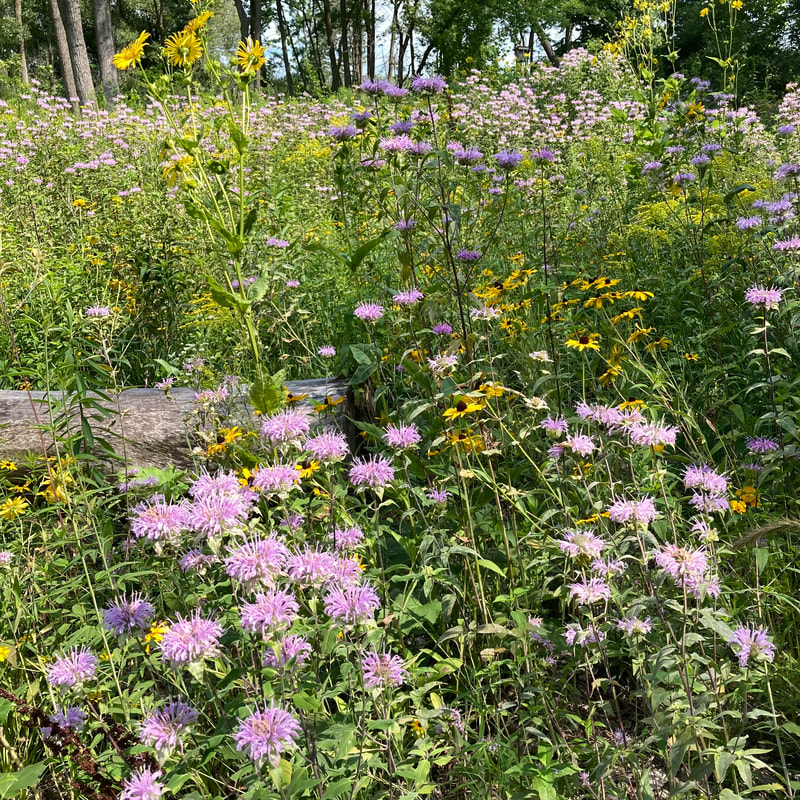|
Photo and article by Donna Iverson A recently-published book called Prairie Up: An Introduction to Natural Garden Design, offers a new approach to home gardening. Author Benjamin Vogt argues that gardeners need to return a portion of their land to a wild state. He urges homeowners to partially get rid of lawns and formal gardens and grow native plants in an open meadow-like fashion. And does this approach work in Western Michigan? Yes, according to a map prepared by the US Environmental Protection Agency (EPA), it does. Their ecoregion map designates Western Michigan as a drift prairie. Prairie is defined as open grassland not covered by trees and forests. Vogt urges us to start small and return a portion of our lawns to a flowering meadow or prairie. Clearing a space for this is not an easy task. Rototilling exposes weed seeds. Herbicides can harm pollinators. Renting a sod cutter to remove grass can be expensive and difficult to use for the average gardener. Other options include using dark plastic, cardboard, or newspaper to cover an area and kill the vegetation underneath. Finally, one can pull out hybrid non-native flowers and other ornamentals that are not native and start replacing them with native forbs. Examples include coneflower, coreopsis, Black-eyed Susans, goldenrod, Liatris, spiderwort, and bee balm. If you would like to see a recently-planted prairie field, visit the Muskegon Lake Nature Preserve. There is parking and a map at the entrance to the site which is only a short walk for visitors. To learn more about native plants online, check out: https://bplant.org. It includes clickable ecoregion maps which list plants native to your specific location.
0 Comments
Your comment will be posted after it is approved.
Leave a Reply. |
Archives
April 2024
Categories |

 RSS Feed
RSS Feed